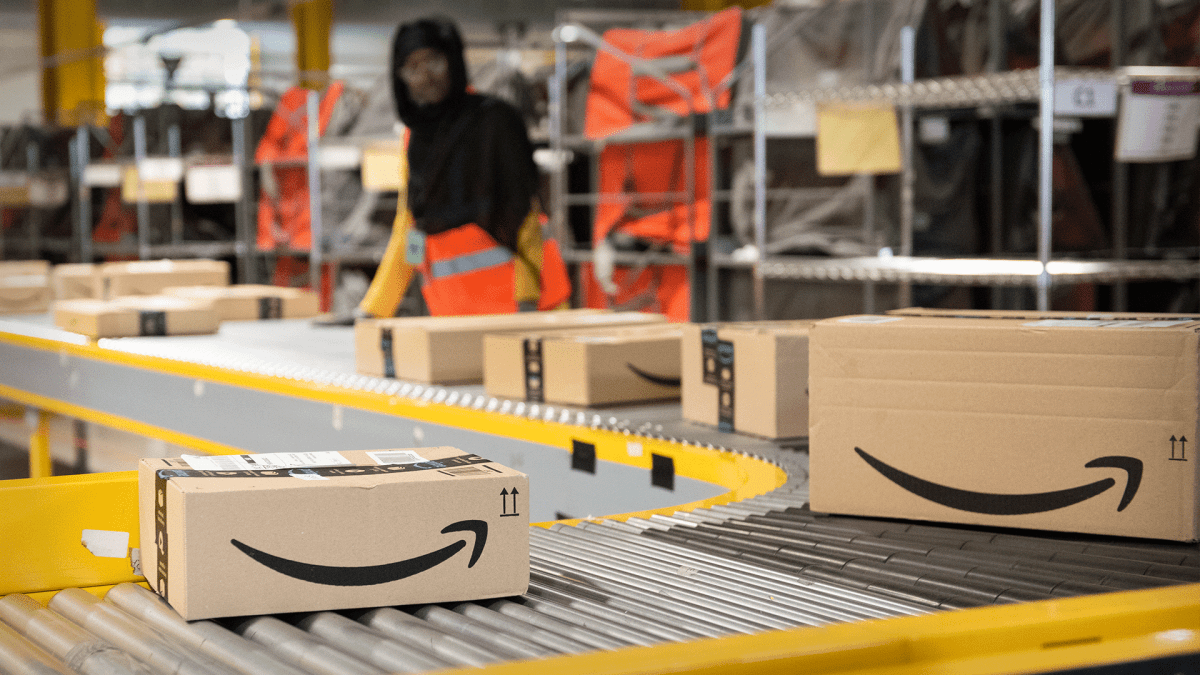
Across the country, dozens of buildings sit empty or unfinished, a potent reminder that boom times can quickly turn into bust.
Real estate often operates this way. Just over a decade ago, America witnessed its greatest economic downturn since the Great Depression because of this zealous hunger to convert property into profits.
But this time, the culprit isn’t greedy Wall Street investors looking to flip homes and offices. Instead, Amazon Inc. (AMZN) is the company holding the proverbial bag of excess real estate that it does not yet know how — or even whether — to use.
During the pandemic, the e-commerce giant rapidly expanded its already vast network of fulfillment, sorting, and distribution centers due to the soaring demand for e-commerce. Amazon now realizes it went too far.
Last year, Amazon closed, canceled, or delayed over 90 buildings, mostly in the United States, according to MWPVL International consulting firm.
One of those projects was the $5 billion second headquarters in Virginia that Amazon announced with great fanfare in 2021 that it planned to build. This year, MWPVL predicts the company will continue to pull back its real estate projects across America and the rest of the world.
E-commerce is Costly — and Hard
Despite booming pandemic sales, Amazon still found it difficult to make money because operating a sprawling e-commerce system, especially one that offers one day or even one hour delivery, is pricey.
In 2022, Amazon reported a whopping $501.8 billion in total operating expenses, more than double just four years ago. As a result, the company’s operating income, which is how it measures profitability, fell 16% from 2020. North America actually lost $2.8 billion.
Even more shocking is this revelation: despite having popularized the idea of buying stuff on the internet, Amazon is still struggling with it, especially when it comes to the so-called last mile of delivery to consumers.
“Amazon’s last mile system is kind of chaotic,” said Burt Flickinger, managing director of Strategic Resources Group in New York.
Until now, Amazon operated a centralized system in which large fulfillment centers would ship online orders to regional and local delivery stations.
But if a fulfillment center nearest to the customer ran out of the product, the company would have to ship merchandise from other fulfillment centers scattered far across the country. The result was increased delivery times and costly delays.
In his recent letter to shareholders, CEO Andy Jassy said the problem grew worse as the system got bigger.
“This challenge became more pronounced as our fulfillment network expanded to hundreds of additional nodes over the last few years,” Jassy wrote, “distributing inventory across more locations and increasing the complexity of connecting the fulfillment center and delivery station nodes efficiently.”

Revamping its Inventory System
The big takeaway here is that bigger doesn’t mean better. Amazon realized its plan to rapidly build more warehouses and fulfillment centers didn’t fix its underlying problem of matching supply to demand in the shortest amount of time.
So what is Amazon going to do with all of its real estate? According to MWPVL, the company currently has 1,285 “active facilities” in the United States totaling 409.2 million square feet. MWPV also says Amazon planned to build 231 more facilities totaling another 82.5 million square feet.
Fortunately for Amazon, the company was able to sign 5-7 year leases for many properties versus the standard 10-12 years, Flickinger said. So the company will likely just sit on them until the leases expire, he said.
And there will be no shortage of suitors for those leases. Large retailers like Walmart Stores Inc. (WMT) and Target Corporation (TGT) have been expanding their last mile capabilities as consumers increasingly demand shorter and more reliable delivery services for their online orders.
“For retailers, ensuring a smooth and satisfactory last mile delivery — the final leg of the journey where a product lands in a consumer’s hands — is more significant than ever,” according to a report by Capgemini Research Institute.
“A great last-mile delivery service that delights consumers will go a long way towards attracting and retaining customers,” the report said.
Amazon will also likely still need some of those properties as it reconfigures its network to a more regional-based system.
“We’ve recently completed this regional roll out and like the early results,” Jassy said. “Shorter travel distances mean lower cost to serve, less impact on the environment, and customers getting their orders faster.”
“We’re on track to have our fastest Prime delivery speeds ever in 2023,” he said. “Overall, we remain confident about our plans to lower costs, reduce delivery times, and build a meaningfully larger retail business with healthy operating margins.”







